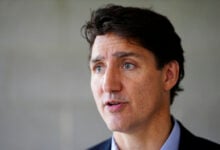Israel kills Hezbollah successor Safieddine in Beirut strike
Israeli airstrike eliminates Hezbollah's Safieddine and senior leaders in Beirut

Israel’s military announced on Tuesday the elimination of Hashem Safieddine, Hezbollah’s Executive Council head and likely successor to the slain leader Hassan Nasrallah. The strike, which occurred three weeks ago in a southern Beirut suburb, also resulted in the death of Ali Hussein Hazima, the Intelligence Directorate head, alongside other Hezbollah commanders.
The army’s statement confirmed the deaths, noting the attack took place about three weeks ago. Hezbollah has not yet commented on these claims. On October 8, Israeli Prime Minister Benjamin Netanyahu had mentioned the military’s successful operation but did not name Safieddine specifically. Addressing Lebanon, Netanyahu stated that Israeli forces had neutralised thousands of terrorists, including Nasrallah and his potential successors.
Late on Tuesday, the army detailed that Israel’s air force executed a targeted strike based on precise intelligence on Hezbollah’s main intelligence headquarters in Dahiyeh, a stronghold in southern Beirut. Over 25 Hezbollah militants were reportedly present, including Bilal Saib Aish, responsible for aerial intelligence.
WARNING: GRAPHIC CONTENT
Terrifying footage shows the destruction of an apartment building in an Israeli air strike as the army confirmed it “eliminated” Hezbollah’s Hashem Safieddine.
LIVE UPDATES: https://t.co/2w9HBfxMoe pic.twitter.com/hsYAl6EBCh— The Daily Telegraph (@dailytelegraph) October 23, 2024
Safieddine, a member of Hezbollah’s decision-making body and a distant relative of Nasrallah, had been out of contact since the strikes on Beirut weeks ago. A Hezbollah insider earlier indicated Safieddine, a deeply religious cleric with strong ties to Iran, as the most probable candidate for the party’s leadership. Safieddine, who closely resembled his cousin Nasrallah, was in his late 50s or early 60s.
Lieutenant General Herzi Halevi, Israel’s army chief, stated late on Tuesday that they had successfully targeted Nasrallah, his replacement, and most of Hezbollah’s senior leadership after confirming Safieddine’s death.
Following nearly a year of conflict with Hamas in Gaza, Israel refocused on Lebanon in late September to secure its northern border from Hezbollah’s cross-border fire. Israel increased airstrikes on Hezbollah strongholds and deployed ground troops, resulting in at least 1,552 fatalities since September 23, based on Lebanese health ministry figures.
On Tuesday evening, the Israeli military urged residents to evacuate southern Beirut suburbs, warning of upcoming attacks. Recently, the military targeted Hezbollah’s financial assets across Lebanon. Hezbollah has continued to launch rockets and missiles at Israel. The military reported that by 23:00, approximately 140 projectiles had crossed from Lebanon into Israel on Tuesday.
What Other Media Are Saying
- The New York Post reports Israel’s military confirms the killing of Hashem Safieddine, believed to be Hezbollah’s next top official, in a recent strike, highlighting a significant blow to the terrorist group.(read more)
- NPR reports Israeli airstrikes killing Hashem Safieddine, a high-ranking Hezbollah official, amid escalating conflicts in Lebanon and ongoing tensions with Iran.(read more)
Frequently Asked Questions
Here are some common questions asked about this news
Who was Hashem Safieddine?
Hezbollah’s Executive Council head and likely successor to Hassan Nasrallah.
When did Israel’s military strike happen?
About three weeks ago in a southern Beirut suburb.
What did Israeli Prime Minister Netanyahu say on October 8?
He mentioned the military’s successful operation but did not name Safieddine specifically.
How many Hezbollah militants were reportedly present during the strike?
Over 25 militants.
Why did Israel refocus on Lebanon in late September?
To secure its northern border from Hezbollah’s cross-border fire.







